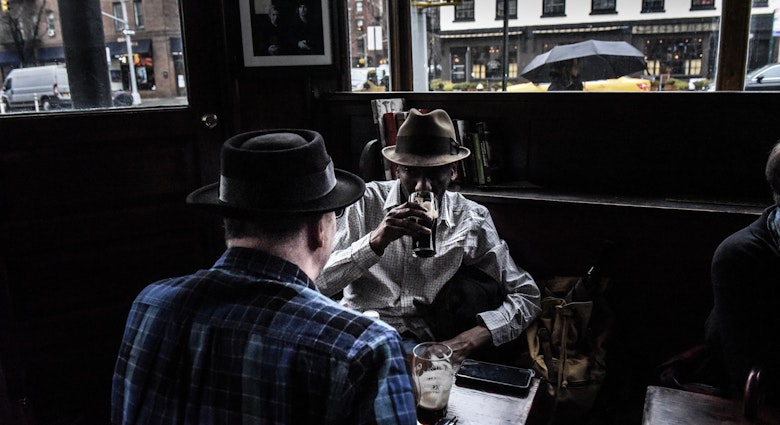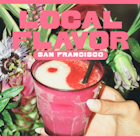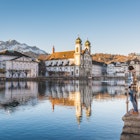Gordon Edgar is the cheese buyer for San Francisco’s famous Rainbow Grocery Cooperative (rainbow.coop), a store that is well-known by Bay Area food-lovers for having an amazingly well-stocked and diverse cheese selection. When I found out that Gordon had published a book, Cheesemonger: A Life on the Wedge, I had to ask him about combining cheese and travel.
What countries produce your favorite cheeses?
Well, right now the USA…and I’m not a super patriotic person. I just think there is a whole lot of energy, effort and excitement around US-made cheeses right now. The jump in quality and quantity (of small producers) has been incredible in the last ten years. The Swiss are also producing a lot of amazing new cheeses because of a change in the way their cheese subsidy works. But if I were answering this question for classic cheese, I’d go with the boring conventional answer: France and Italy.
Which country do you think is most underrated for its cheese?
Canada (well Québec, at least), Portugal, and the United States.
Québécois cheesemakers are producing amazing products, many of which are unavailable here. If you miss French cheese, save some dollars and fly to Montréal instead of Paris!
The Portuguese might not have a lot of cheese exported to the US, but the Serra da Estrela (wikipedia.org) is one of the world’s best, yet it’s almost never mentioned. Raw sheep milk, milk thistle rennet, it’s an oozy cheese that can only be made in the Iberian Peninsula: rich, sour, pungent and complex!
As for the US, well, the American Cheese Society Competition (cheesesociety.org) had 1800 entries this year!
What are some of the best US cheeses? Where are they being produced and can you go visit there?
Yeah, go ahead and ask the question that makes cheesemakers mad at me! I always get more response from the people I leave out then from the people I mention.
Let’s start with Vermont. One of the most interesting cheese projects in the country is being run at Jasper Hill Farm (jasperhillfarm.com) in the Northeast Kingdom. Not only do they make the Winnimere, one of my favorite all-time cheese, they also built an aging room and are aging cheese for other farmers so that other small dairy folks can survive in this economic climate.
In Wisconsin, I really must mention Pleasant Ridge Reserve from Uplands Cheese Company (uplandscheese.com). They are one of the only cheesemakers to win the American Cheese Society Best of Show more than once. It’s an alpine style cheese, similar to a well-aged Gruyere in flavor, but with its own special kick.
Being a Californian, I must mention Harley Farms (harleyfarms.com). They are an award-winning producer of goat cheese and their beautiful farm in Pescadero is an easy place to visit if you are on Highway 1. They have been so successful running tours and selling cheese off their farm that they have dropped their outside distribution. We can carry it at our co-op because we’re kind of grandfathered in, but it is one of my favorite farms to visit. (And be sure to get an olallieberry pie at Duarte’s Tavern while you are in town!)
Most farms and dairies are busy places not open to the public, but there is a Vermont Cheese Trail which lists a number of cheese places you can visit. Washington, California and Wisconsin also have maps listing where cheesemakers are and which are open to the public.
Editor's note: Looking for cheesey fun in California? Check out our California cheese trips, which includes links to downloadable PDF itineraries for visiting some of Northern California's most beloved cheesemakers.
Where in the US would you be most surprised by great artisanal cheese?
Great cheese is popping up everywhere in the country, especially in the south (www.southerncheese.org). A personal favorite is Sweet Grass Dairy (www.sweetgrassdiary.com) in Thomasville, Georgia. They are a pasture-based dairy – something fairly unusual in the US – and they make one of the best soft-ripened cheeses in the country.
Can you explain the concept of terroir and how it relates to cheese?
'Terroir' basically means that a food product contains a sense of the place where it was made; that – in the case of cheese – the grasses that the mammals are eating (and the breed of mammals themselves) will make an individual cheese tastes wholly unique, that it would be unable to be copied anywhere else in the world. This is part of the concept behind name controls which regulate that (for example) Champagne or Gruyere de Comté can only be labeled as such if made in certain regions under certain conditions.
However, 'terroir' can also be a marketing scam or the pretentious daydream of a lazy food writer. If the term is used for a cheese where the animals don’t graze, where the company buys milk from the non-immediate area, or the company uses frozen curd from another country, there’s no terroir there. It might be a good cheese, but the only terroir is in someone’s imagination.
What travel tips do you have for cheese lovers?
Eat local! Or rather, eat what the locals eat. That’s the way to get to know a place.
If you could visit any cheese maker in the world, who would it be and why?
Unbelievably (to me) I have not visited the zona tipica in Italy and seen Parmigiano Reggiano being made. It is a pilgrimage I must make before I die!
This article was originally published in October 2010 and was republished in December 2013.
Gordon Edgar loves cheese and worker-owned co-ops, and has been combining both of these infatuations as a cheesemonger at Rainbow Grocery Cooperative in San Francisco for almost 20 years. Edgar has been a judge at cheese competitions, a board member for the California Artisan Cheese Guild, and has had a blog since 2002, which can be found at www.gordonzola.net. Surrounded by his vast and decaying collection of zines and obscure punk 7-inches, he lives in San Francisco with his girlfriend and their white miniature schnauzer. His cheese memoir, Cheesemonger: A Life on the Wedge, was published in early 2010.












